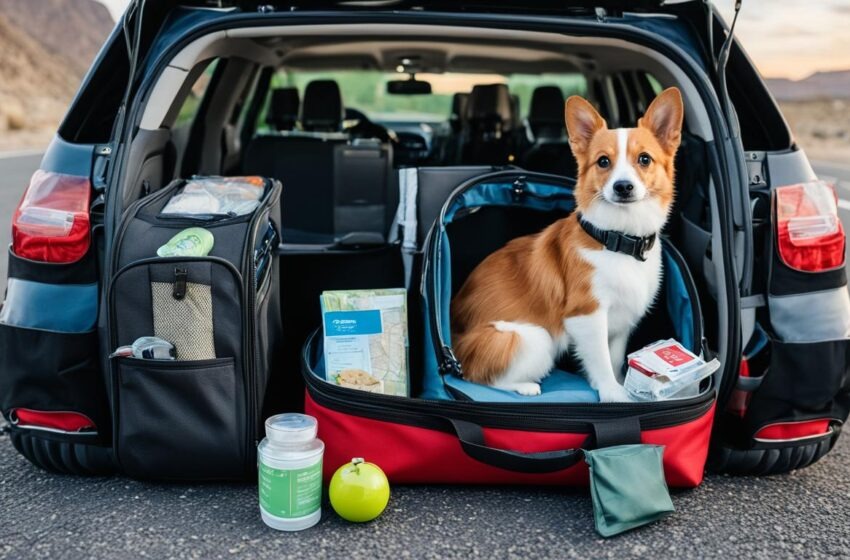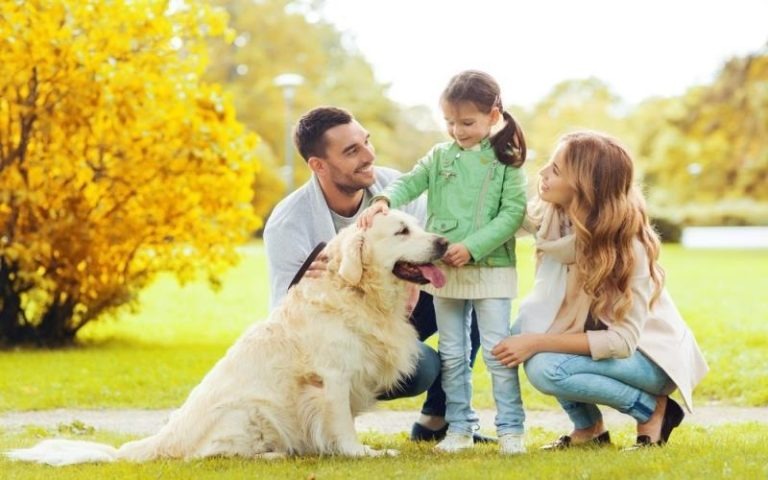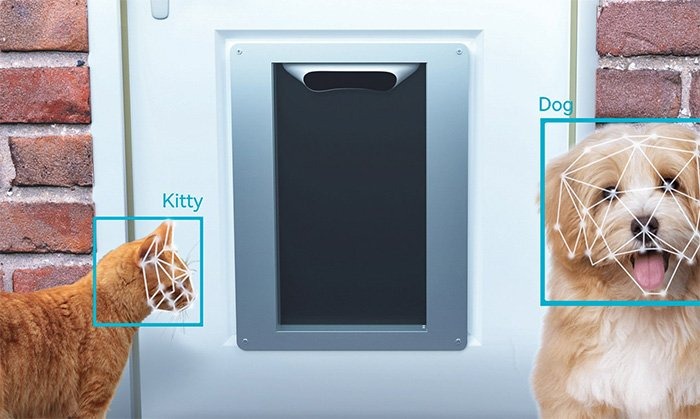
Travel with Pets: Essential Safety Tips for 2025.
In 2025, traveling with pets requires careful planning, modern technology, and updated safety standards to ensure comfort, health, and security. From airline regulations and GPS tracking to road trip safety and international quarantine rules, understanding essential tips can make every journey stress-free and enjoyable for both pets and owners, creating memorable and safe adventures wherever you go.
🐶 Pet Star
57 min read · 18, Oct 2025

Introduction
In 2025, pet travel has evolved far beyond the days of simple car rides to the vet. From advanced airline pet programs to international microchip identification, traveling with your furry companion has become a refined process balancing convenience, safety, and compassion. With over 70% of pet owners globally expressing a desire to include their pets in vacations, understanding essential safety protocols has become vital. Whether you’re road-tripping, flying, or taking a cruise, pet travel now demands thoughtful preparation and adherence to global standards introduced over recent years.
This article explores everything you need to know about traveling safely with pets in 2025, including updated airline policies, tech innovations in pet tracking, legal documentation, climate control measures, and practical tips for ensuring your pet remains comfortable and calm throughout the journey.
1. Pre-Travel Preparations: Health, Documentation, and Microchipping
Before setting out on any journey, preparation is key. In 2025, international and even domestic travel laws have become stricter to ensure animal welfare.
a) Veterinary Check-Ups and Health Certificates
Ensure your pet undergoes a full veterinary check-up at least 10 days before travel. Many airlines and countries now require a digital health certificate, validated through platforms like the Global Pet Travel Registry (GPTR). Vaccinations, particularly for rabies and kennel cough, must be up to date, and proof should be accessible digitally.
b) Microchip Identification and GPS Trackers
Microchipping is now a mandatory requirement in most countries. It helps authorities track lost pets and confirm ownership instantly. Modern smart collars like the Tractive XL and Whistle Go Explore 2025 now offer GPS tracking, temperature alerts, and even real-time stress monitoring—essential features for travel.
c) Acclimation to Carriers and Crates
Introduce your pet to their travel crate well in advance. Airlines have tightened crate regulations under the 2025 Pet Cabin Safety Standards (PCSS). Approved crates must offer adequate ventilation, leak-proof flooring, and secure locks. Label the crate with your name, destination, and emergency contact.
2. Air Travel Safety in 2025
Airlines have greatly improved pet travel options, with many introducing “Pet Comfort Cabins” or temperature-regulated cargo zones. However, safety begins with understanding policies.
a) Cabin vs. Cargo: Choosing the Right Option
- Small pets under 10 kg can usually travel in-cabin, inside an approved carrier.
- Larger pets must travel in cargo, but with enhanced climate and pressure controls introduced since 2023.
- Always check the airline’s Pet Safety Rating, now published by the International Air Transport Association (IATA) for transparency.
b) Airlines with Leading Pet Safety Programs
- KLM Royal Dutch Airlines: Offers live pet monitoring through their “SkyPet” app.
- United Airlines (PetSafe 2.0): Features 24/7 on-ground veterinary care at major airports.
- Emirates SkyPets: Introduced personalized travel pods with climate and humidity control.
c) Avoiding Extreme Temperatures
Schedule flights during early morning or late evening in summer months and midday flights during winter. Pets are most vulnerable to heatstroke and cold shock, especially during loading and unloading.
d) Feeding and Hydration
Avoid feeding pets 4 hours before flying to prevent nausea. Hydration is crucial; freeze water in a dish that melts gradually during travel. Airlines now allow hydration gel packs for longer flights.
3. Road Travel Safety: Comfort, Restraints, and Breaks
Driving with pets might seem easier, but it also comes with its challenges.
a) Use Proper Restraints
Free-roaming pets can distract drivers and risk injury in accidents. Use crash-tested seat belts, carriers, or booster seats. Products certified by the Center for Pet Safety (CPS) in 2025 ensure impact resistance and comfort.
b) Maintain a Comfortable Temperature
Modern cars now include pet climate zones or seat coolers. Never leave pets unattended in a parked car—temperatures can soar dangerously within minutes, even with windows cracked.
c) Frequent Breaks and Hydration
Stop every 2-3 hours to allow your pet to stretch, relieve itself, and drink water. Keep a portable litter box (for cats) or travel water bowl handy.
d) Calming Travel Anxiety
Some pets experience motion sickness or anxiety. CBD-based pet treats, pheromone sprays, or vet-prescribed mild sedatives can help, but always test them before long trips.
4. International Travel and Quarantine Rules
With global travel surging again post-2023, many countries have revised their importation and quarantine regulations for pets.
a) Country-Specific Pet Policies
- EU Nations: Pets must meet the EU Pet Passport requirements, including a 15-digit ISO microchip and rabies vaccination.
- Australia & New Zealand: Still have strict quarantine laws, often requiring 10-14 days of isolation.
- Japan & Singapore: Demand advance notice of pet arrival (minimum 40 days).
b) Digital Health and Travel Passports
The new “PetID e-Passport 2025” integrates microchip data, vaccination history, and owner identification, eliminating paperwork delays.
c) Pet Insurance for International Travel
Comprehensive pet travel insurance now covers medical emergencies, loss, or quarantine delays. Popular providers like Trupanion Global and Figo Pet Insurance have international vet partnerships.
5. New Tech Innovations in Pet Travel Safety (2025 Update)
Technology has transformed pet travel safety in recent years:
- Smart Collars: Track heart rate, temperature, and GPS location in real time.
- AI-Powered Travel Apps: Platforms like PetVoyage AI suggest pet-friendly hotels, rest stops, and veterinarians en route.
- Wearable Health Sensors: Devices like FitBark Air 3.0 alert owners if stress levels spike mid-flight.
- Climate-Controlled Pet Pods: For long-distance travel, autonomous pods maintain consistent temperature and humidity, especially during transfers.
6. Lodging and Destination Preparation
Your travel safety plan shouldn’t end at the airport or car door. Ensuring your destination is pet-friendly is crucial.
a) Booking Pet-Friendly Accommodations
Use updated databases like BringFido 2025 or Airbnb Pet+ filters to find hotels with safe, enclosed spaces and on-site veterinarians.
b) Maintaining Routines
Keep feeding and walking schedules consistent. Familiar smells, bedding, and toys can reduce anxiety and help your pet adapt faster.
c) Watch for Local Hazards
Different regions have unique dangers—ticks, toxic plants, or unfamiliar wildlife. Research before arrival, especially when visiting rural or tropical areas.
7. Emergency Preparedness
No matter how well you plan, emergencies can happen. Always have a backup plan.
a) Emergency Contacts
List the nearest 24-hour veterinary clinics, animal hospitals, and local shelters along your route.
b) Pet First Aid Kit
Include essentials such as antiseptic wipes, gauze, tweezers, digital thermometer, saline solution, and your pet’s medications.
c) Backup Identification
Alongside a microchip, use QR-coded tags that link to your contact info and pet’s medical records online.
8. Special Considerations for Exotic Pets
While dogs and cats are the most common travelers, exotic pets such as reptiles, birds, or rabbits require special attention.
- Birds: Sensitive to temperature changes; ensure constant ventilation and stable light conditions.
- Reptiles: Must travel in insulated containers to maintain proper humidity and warmth.
- Rabbits: Avoid flights when possible; they’re prone to stress-induced cardiac issues.
Always confirm airline and border control regulations specific to these species before booking.
9. Sustainable and Ethical Pet Travel
In 2025, sustainability extends to pet travel too. Eco-conscious pet owners are encouraged to:
- Use biodegradable waste bags and eco-friendly carriers.
- Choose airlines or transport services with carbon-offset pet programs.
- Support pet welfare-certified accommodations that meet ethical standards.
10. Psychological Comfort: Keeping Your Pet Calm
Anxiety remains one of the top concerns during pet travel. Techniques include:
- Desensitization training—simulate travel environments at home.
- Use familiar items like blankets and toys.
- Play calming sounds or classical music, which research shows reduces stress in pets.
- Stay calm yourself—pets mirror owner behavior.
Traveling with pets in 2025 has evolved into an entirely new experience that blends technology, empathy, and global awareness. As people increasingly treat their pets like family members, ensuring their safety, comfort, and emotional well-being during travel has become a top priority. Today, it’s not just about getting from one place to another—it’s about doing so responsibly, safely, and with full compliance with international standards. The modern pet parent must now consider microchipping, health certifications, airline policies, vehicle safety, and even psychological comfort before setting out. The first and most vital step in preparing for a trip with your furry companion is visiting the veterinarian. A full health check-up and updated vaccination record are mandatory for most airlines and countries. In 2025, digital health certificates—stored and verified through platforms like the Global Pet Travel Registry (GPTR)—have replaced paper documents, ensuring seamless border clearance and health verification. Microchipping is no longer optional; it’s a legal necessity across much of the world. These microchips, combined with smart GPS-enabled collars like the Tractive XL or Whistle Go Explore, offer real-time tracking, temperature alerts, and even stress indicators, which can be monitored through mobile apps. Once your pet is medically cleared, acclimating them to their travel crate is crucial. Airlines now follow the Pet Cabin Safety Standards (PCSS) of 2025, requiring crates to have proper ventilation, leak-proof bases, and secure locks. For air travel, size and weight dictate where your pet travels—small pets under 10 kg can usually accompany you in-cabin, while larger animals are placed in temperature-regulated cargo zones that simulate cabin pressure and humidity. Reputable airlines like KLM, Emirates, and United now offer special programs such as SkyPet or PetSafe 2.0, which provide live tracking, veterinary monitoring, and pet comfort pods. To avoid exposure to extreme heat or cold during layovers, travelers are advised to book early morning or evening flights during summer and midday flights during winter. Feeding should be managed carefully; it’s best not to feed pets four hours before departure to prevent nausea, but hydration must be maintained through water dispensers or gel packs approved by airlines. On the road, car travel also demands meticulous planning. Gone are the days when pets could roam freely on back seats. Crash-tested carriers and seat harnesses certified by the Center for Pet Safety (CPS) are now recommended to prevent injury in case of sudden stops or accidents. Many modern vehicles even include built-in pet climate zones or seat ventilation, ensuring constant comfort during long drives. Frequent breaks every two to three hours help pets stretch, hydrate, and relieve themselves. Anxiety, a common challenge during car rides, can be eased through pheromone sprays, CBD-based treats, or gentle background music. When traveling internationally, understanding quarantine and importation laws is essential. Countries like Australia, New Zealand, and Japan maintain strict quarantine measures, often requiring advance notifications and health assessments weeks before arrival. The European Union continues to uphold its Pet Passport system, ensuring every pet has a 15-digit ISO microchip and valid rabies vaccination. The new PetID e-Passport 2025, integrating all digital medical and identification data, is rapidly becoming the global standard. Additionally, pet travel insurance has become an essential safeguard against medical emergencies, flight delays, or quarantine costs. Companies like Trupanion and Figo now provide international veterinary networks for peace of mind. Technological advancements have also revolutionized pet travel in 2025. Smart collars with AI analytics monitor heart rate and stress, while apps like PetVoyage AI help travelers plan routes with pet-friendly stops, hotels, and veterinary clinics. Wearable devices such as FitBark Air 3.0 can even send alerts if a pet becomes overheated or stressed mid-journey. Climate-controlled pods and autonomous carriers now allow pets to travel comfortably even in changing environmental conditions. Upon arrival at your destination, ensuring a safe and pet-friendly environment is just as vital as the journey itself. Always research hotels and accommodations through databases like Airbnb Pet+ or BringFido 2025, which list places offering secure play areas, veterinary support, and eco-friendly amenities. Maintaining your pet’s routine—feeding, walking, and sleeping schedules—helps reduce stress in unfamiliar surroundings. Familiar smells, toys, and blankets provide emotional stability, making adaptation easier. Be aware of local hazards such as ticks, poisonous plants, or wildlife, especially in rural or tropical areas. Despite the best planning, emergencies can still arise. Always carry a pet-specific first aid kit including antiseptic wipes, bandages, tweezers, saline solution, and your pet’s regular medications. A list of emergency contacts—24-hour animal hospitals, local vets, and shelters—should be saved both physically and digitally. Redundant identification, such as QR-coded tags linked to online medical profiles, can be a lifesaver if a pet gets lost. For those traveling with exotic animals, special considerations apply. Birds require stable temperature and light, reptiles must have humidity-regulated containers, and rabbits are best kept off long flights due to stress sensitivity. Compliance with airline and border regulations for exotic pets should always be confirmed well in advance. In 2025, sustainability has also entered the pet travel industry. Environmentally conscious pet parents now opt for biodegradable waste bags, eco-certified carriers, and airlines offering carbon-offset options for animal transport. Ethical lodging that supports animal welfare standards is becoming a global preference, merging compassion with sustainability. Emotional care remains just as crucial as physical safety. Pets often mirror their owner’s energy, so staying calm and reassuring them through gentle interaction, consistent commands, and familiar stimuli can make a world of difference. Some owners use desensitization training before travel, gradually introducing their pets to confined spaces or motion sounds to reduce panic. Scientific studies even show that classical music can help stabilize a pet’s heart rate and lower anxiety during transit. Ultimately, the golden rule of pet travel in 2025 is preparation, patience, and compassion. Advanced technology and stricter global standards have made travel safer than ever, but a pet’s sense of security still depends on its human companion’s care and attention. Whether journeying across cities or continents, remember that pets don’t just need safety—they need reassurance, routine, and love. A well-prepared trip, complete with digital documents, safety-certified gear, and empathy-driven planning, ensures not only a successful journey but also a joyful one. With proper care and awareness, traveling with pets in 2025 isn’t just possible—it’s an enriching experience that strengthens the bond between humans and their beloved companions, one safe mile at a time.
Traveling with pets in 2025 has become an increasingly sophisticated and essential aspect of responsible pet ownership, as more pet parents recognize their furry companions as integral members of the family and seek to include them in every journey, whether it is a short road trip or a long-haul international flight, and ensuring safety, comfort, and emotional well-being has now become a multi-layered process that requires careful preparation, understanding of updated regulations, and integration of modern technology, starting with a comprehensive veterinary checkup that not only assesses the pet’s overall health but also confirms up-to-date vaccinations, including rabies and other region-specific requirements, along with the acquisition of a digital health certificate through platforms such as the Global Pet Travel Registry, which has become the standard for international travel documentation in 2025, ensuring seamless verification across airlines and border control authorities, while microchipping remains a critical requirement that serves as a permanent form of identification and, when paired with smart GPS collars like Tractive XL or Whistle Go Explore, allows for real-time tracking, temperature alerts, and stress monitoring to enhance pet safety during transit; in addition to these technological safeguards, acclimating pets to travel carriers or crates is essential for reducing anxiety, as modern regulations under the 2025 Pet Cabin Safety Standards mandate that crates meet strict requirements for ventilation, secure locking mechanisms, leak-proof floors, and sufficient space to allow pets to stand, turn, and lie down comfortably, with proper labeling including the owner’s contact information and destination to prevent mishandling or loss, while understanding the distinction between cabin and cargo travel is vital, as small pets under a certain weight threshold may travel in the passenger cabin in approved carriers, whereas larger pets must be accommodated in climate-controlled cargo compartments with regulated pressure, temperature, and humidity, and airlines like KLM, Emirates, and United have introduced specialized programs such as SkyPet and PetSafe 2.0 that provide live monitoring, on-ground veterinary support, and enhanced comfort pods designed to reduce stress during transit, with strategic planning to avoid flights during extreme temperatures being recommended to prevent heatstroke or cold shock, especially during loading and unloading, and careful feeding schedules, avoiding meals within four hours of departure while ensuring hydration through gel packs or gradually melting ice water, can prevent nausea and dehydration, all while road travel presents its own set of considerations where crash-tested seat belts, harnesses, or carriers certified by the Center for Pet Safety have become essential to prevent injury, frequent breaks every two to three hours for exercise and bathroom needs, portable water bowls, and climate-controlled seating ensure comfort, and anxiety management techniques such as pheromone sprays, calming treats, or mild vet-approved sedatives may help reduce stress, whereas international travel demands strict adherence to country-specific regulations, such as quarantine periods in Australia, New Zealand, or Japan, compliance with the EU Pet Passport system in European nations, and advance notification requirements, with the PetID e-Passport 2025 now serving as a digital, integrated record that includes vaccination, microchip, and owner information, simplifying cross-border movement, and comprehensive pet travel insurance, including coverage for medical emergencies, quarantine delays, and loss, is now a highly recommended precaution, with companies like Trupanion and Figo offering global veterinary networks; technological innovations have further transformed pet travel, with AI-based apps like PetVoyage AI helping owners plan routes with pet-friendly accommodations, rest stops, and veterinary clinics, while wearable health monitors track heart rate, body temperature, and stress levels in real time, and climate-controlled travel pods maintain consistent environmental conditions, ensuring the pet’s physical and emotional well-being throughout the journey; once at the destination, pet-friendly accommodations must be carefully selected through platforms such as Airbnb Pet+ or BringFido 2025, offering secure outdoor spaces, access to veterinary care, and eco-friendly practices, while maintaining the pet’s regular routine, including feeding, walking, and sleeping schedules, provides familiarity and reduces anxiety, and familiar bedding, toys, and clothing can further aid in creating a sense of security, with local environmental hazards such as wildlife, toxic plants, and insects researched in advance; emergency preparedness remains essential, including carrying a pet first aid kit with antiseptics, gauze, tweezers, medications, and a digital copy of health records, alongside a list of local veterinary contacts, shelters, and emergency services, and redundant identification measures such as QR-coded tags linked to online profiles provide additional security in case of separation, while special considerations for exotic pets such as birds, reptiles, and rabbits require unique accommodations for temperature, humidity, light, and stress reduction, with airline and border regulations verified well ahead of travel; sustainability and ethics are now a crucial part of responsible pet travel, with biodegradable waste bags, eco-certified carriers, carbon-offset airline programs, and animal welfare-certified lodging being preferred, as conscious travel practices reduce environmental impact while ensuring humane treatment; psychological well-being is equally important, with desensitization to travel sounds, exposure to confined spaces, and calming auditory stimuli such as classical music helping to reduce stress, while the pet mirrors the owner’s emotional state, making calm and reassuring behavior essential throughout the journey; ultimately, traveling with pets in 2025 is an exercise in meticulous planning, thoughtful use of modern technology, empathy, and ethical responsibility, combining digital health verification, GPS-enabled monitoring, climate-controlled accommodations, and behavioral support to create safe and enriching experiences, and when owners prepare thoroughly—considering health, documentation, comfort, safety, and emotional reassurance—traveling with a pet can be a rewarding experience that strengthens the bond between human and companion, allowing for shared adventures that are both safe and joyful, whether across city streets or international borders, demonstrating that with proper planning, pet travel no longer needs to be stressful but can instead become a fulfilling, secure, and memorable journey that meets the highest standards of safety, comfort, and compassion in 2025.
Conclusion
Traveling with pets in 2025 is more advanced, safer, and humane than ever before. With digital health documentation, AI-powered travel aids, and smarter airline systems, pet safety has become a global priority. Yet, technology cannot replace human preparation, empathy, and patience. The key lies in thorough planning—ensuring vaccinations are current, carriers are comfortable, and pets are acclimated to travel conditions.
Whether you’re flying internationally or taking a weekend road trip, remember that your pet relies on you for safety and emotional security. When you combine modern tools with responsible ownership, pet travel can be a rewarding and worry-free experience for everyone involved.
Q&A Section
Q1: What is the most important thing to do before traveling with a pet?
Ans: The most crucial step is a veterinary check-up and obtaining a valid digital health certificate, ensuring your pet is fit for travel and meets all vaccination requirements.
Q2: How can I keep my pet calm during air travel?
Ans: Use familiar bedding, pheromone sprays, and gentle background music to soothe your pet. You can also consult your vet for mild anxiety medication if needed.
Q3: Are GPS collars safe for flights?
Ans: Yes, most modern GPS collars are airline-approved and safe, offering real-time tracking and stress monitoring throughout the flight.
Q4: What should I pack in a pet travel kit?
Ans: Include food, collapsible bowls, a leash, waste bags, first aid items, identification tags, and comfort items like toys or blankets.
Q5: How do I handle pet travel abroad with strict quarantine laws?
Ans: Research the destination country’s import regulations, prepare advance notifications, and ensure your pet’s vaccinations and microchip data match the required standards.
Similar Articles
Find more relatable content in similar Articles

How Pets Strengthen Family Bonds...
Pets are more than just compan.. Read More

Smart Homes for Pets: Automated Feeders, Doors, and Mo..
As smart home technology advan.. Read More

How Climate Change Affects Wild and Domestic Animals...
Climate change is dramatically.. Read More

Sustainable Pet Products: What to Look for in 2025...
As sustainability becomes a ce.. Read More
Explore Other Categories
© 2024 Copyrights by rPets. All Rights Reserved.